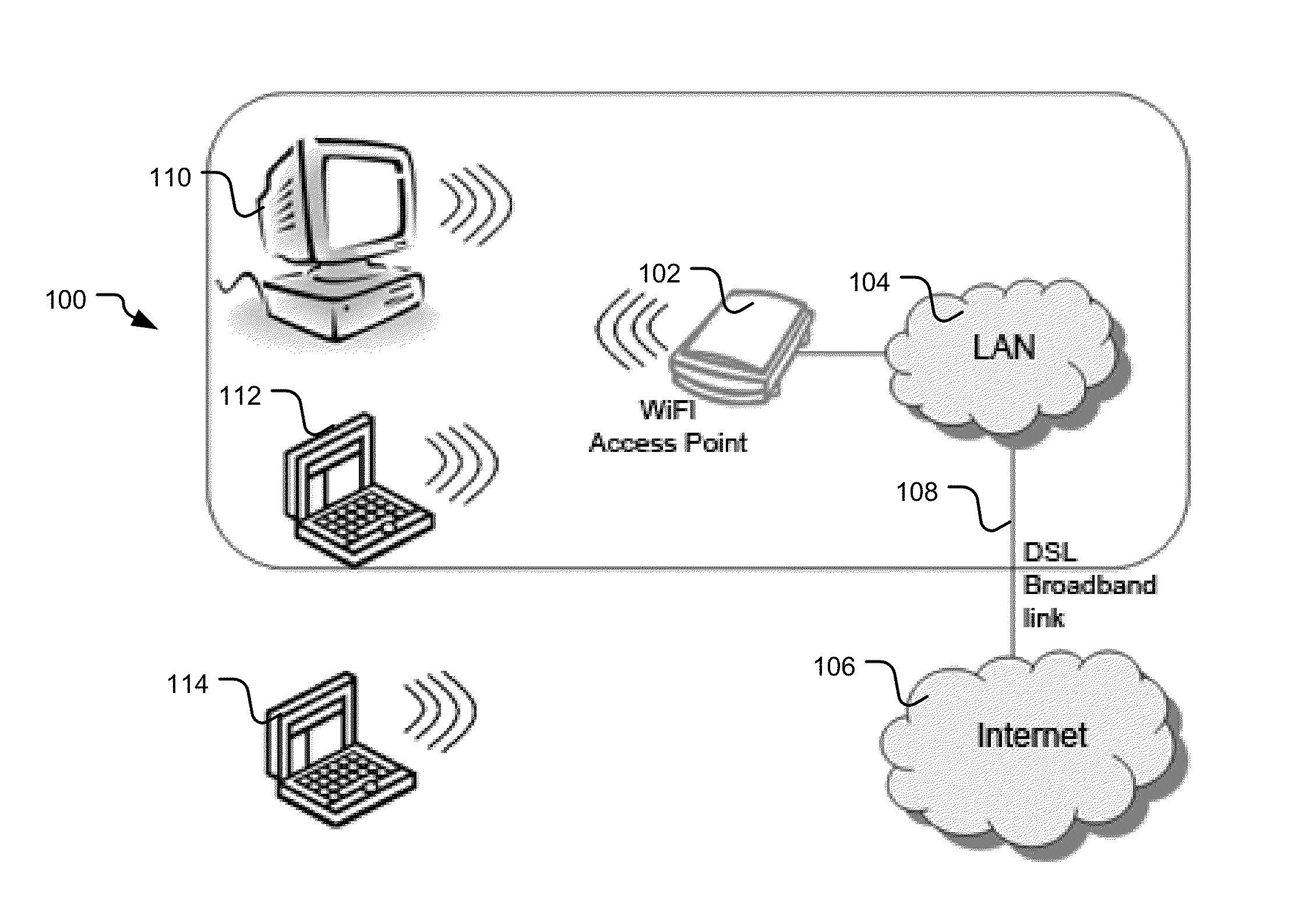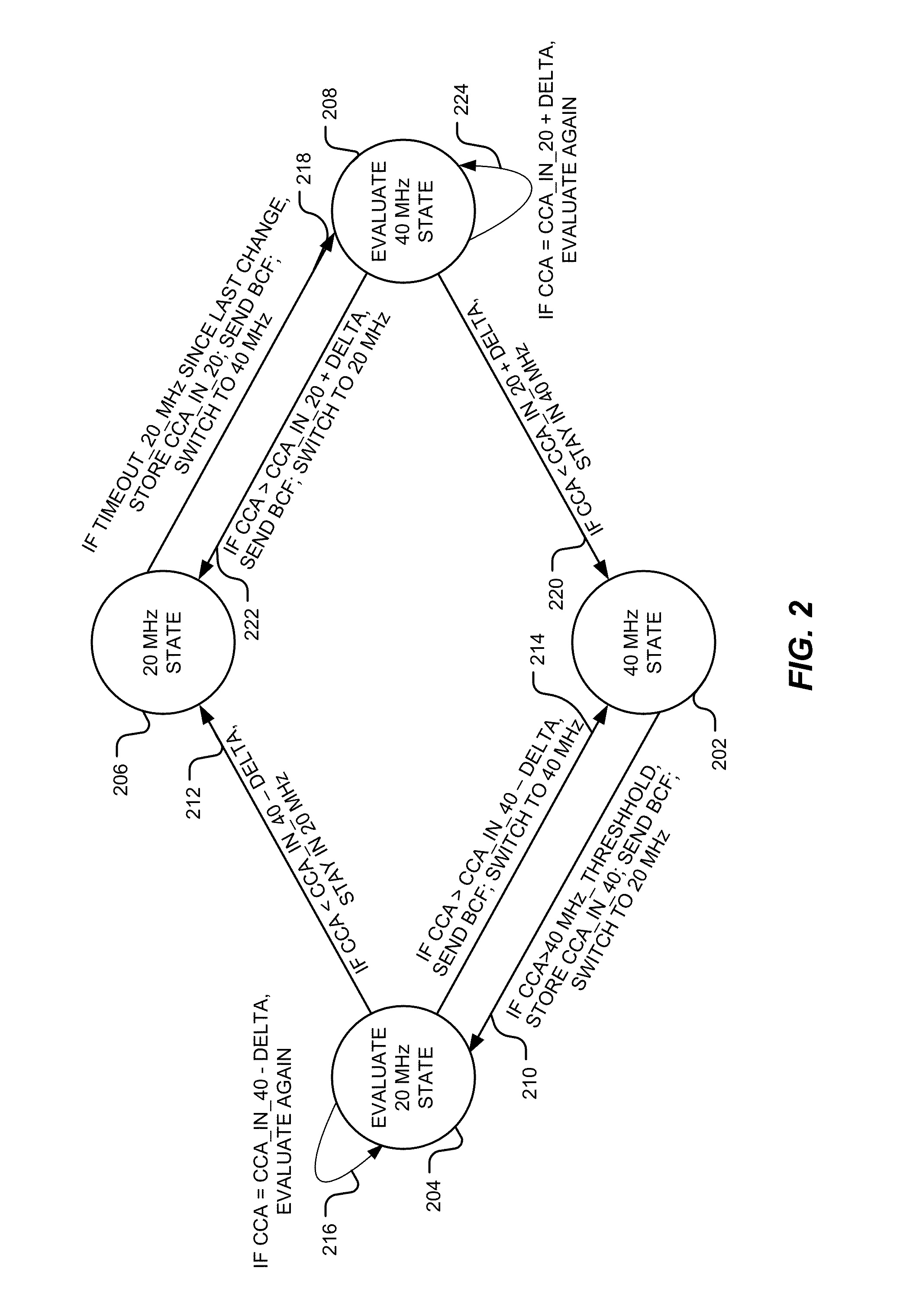Bandwidth selection method and apparatus
a technology of bandwidth selection and bandwidth switching, applied in electrical equipment, network traffic/resource management, radio transmission, etc., can solve the problems of channel bonding increasing the likelihood of signal overlap with other co-located wireless transmitters, affecting the performance of communication systems, and sometimes not producing satisfactory results, so as to reduce receiver noise and improve communication system performance. , the effect of mitigating channel interferen
- Summary
- Abstract
- Description
- Claims
- Application Information
AI Technical Summary
Benefits of technology
Problems solved by technology
Method used
Image
Examples
Embodiment Construction
[0035]FIG. 1 depicts an exemplary WiFi or other wireless communication system 100 in which bandwidth selection techniques may be employed. The WiFi system 100 includes a WiFi access point 102 which may be coupled to a local area network (LAN) 104, which may, in turn, be coupled to the Internet 106 via a digital subscriber line (DSL) or other broadband link 108. Any desired number of communication stations may be permitted to communicate with one another and / or the LAN 104 or the Internet 106 via the WiFi access point 102. For example, in the illustrated system 100, a desktop computer 110 and laptop computers 112, 114 are shown. Each of the computers 110, 112, 114 and the WiFi access point 102 may communicate using the IEEE 802.11n communication standard and may be capable of employing the channel bonding option as specified in that standard.
[0036]The two adjacent 20 MHz channels of a bonded channel may be identified as a control channel and an extension channel. The control channel ...
PUM
 Login to View More
Login to View More Abstract
Description
Claims
Application Information
 Login to View More
Login to View More - R&D
- Intellectual Property
- Life Sciences
- Materials
- Tech Scout
- Unparalleled Data Quality
- Higher Quality Content
- 60% Fewer Hallucinations
Browse by: Latest US Patents, China's latest patents, Technical Efficacy Thesaurus, Application Domain, Technology Topic, Popular Technical Reports.
© 2025 PatSnap. All rights reserved.Legal|Privacy policy|Modern Slavery Act Transparency Statement|Sitemap|About US| Contact US: help@patsnap.com



